Listen to This Article:
When a magazine wants to introduce readers to a new restaurant or a food company is designing packaging for their line of frozen foods, the food itself needs to shine…all without customers tasting or smelling it. That’s where food photographers come in.
While anyone with a smartphone can take a photo of their meal for their personal Instagram account, there’s a lot more to professional food photography than just pointing and shooting! Food photographers must be experts at many skills, including lighting composition, editing, communication, networking, and even cooking.
If you’re interested in making a career out of capturing the beauty of food, learn more about how to become a food photographer.
What Does a Food Photographer Do?
Well, photographers take pictures, right? While food photographers do spend a lot of their time composing and capturing photos, there is more on their agendas than just snapping pics.
Food photographers are usually independent entrepreneurs, so it’s typically up to them to find clients who need their refined skills and specialized services. Potential clients could include independent restaurants or hotels, food manufacturers, magazines and newspapers, grocery stores, food influencers, social media managers, and more.
In order to obtain jobs and keep work coming in, food photographers have to dedicate a portion of their time to building their network and making connections. That means food photographers should be comfortable putting themselves out there and selling their expertise.
Once they’ve been hired for a job, food photographers meet with clients to understand their aesthetics and learn how they envision their food. Since chefs may plate their dishes in a way that makes sense for the guest but doesn’t result in the best photo, the photographer must find a way to honor the chef’s vision while also creating an appealing image.
Great food photography is a matter of detail and patience. A photoshoot may involve rearranging a dish and changing the lighting hundreds of times before you capture the perfect shot. For example, Austin food photographer and former Escoffier Culinary Arts Instructor Melissa Skorpil says that she usually plans on getting only eight usable shots in eight hours!
“One of my favorite [photos] is some lemonades…six glasses of lemonade sounds simple, but every time I tried to move a straw to line it up, the fruit would pop up. It took me six hours to get all that stuff lined up!”*Rhonda Adkins, Food Photographer and Online Culinary Arts Graduate
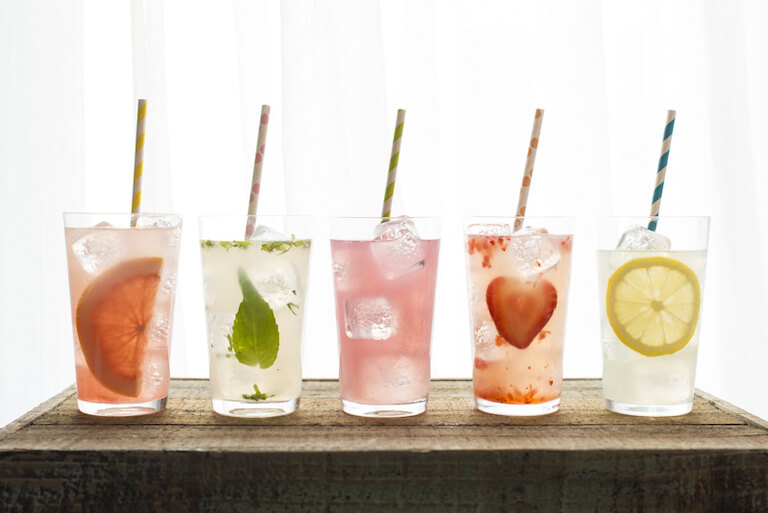
Photo courtesy and copyright Rhonda Adkins Photography
Even after capturing the images on camera, the job isn’t done—the photographer must spend time in their “digital darkroom,” editing their photos to make them perfect. This may involve using programs like Adobe Photoshop, Adobe Lightroom, or other editing programs. When the process is done, the result should be a mouth-watering image that shows off the food at its absolute best.
At this point, the photographer can deliver the image to the client before incorporating any feedback or requested edits.
Who Is On the Food Photography Team?
Some food photographers are 100% independent, but it’s also common to have a small team working on each photoshoot.
While some food photographers design and style their shoots, others collaborate with food stylists. These professionals arrange the food, plates, accessories, and backdrops to look their best and then hand the shoot over to the photographer.
There are all sorts of food styling tricks, from inserting dowels so food stands up straight to adding a false bottom to a soup bowl to elevate the veggies. One food stylist who shoots for a rice company actually places each individual grain with tweezers!
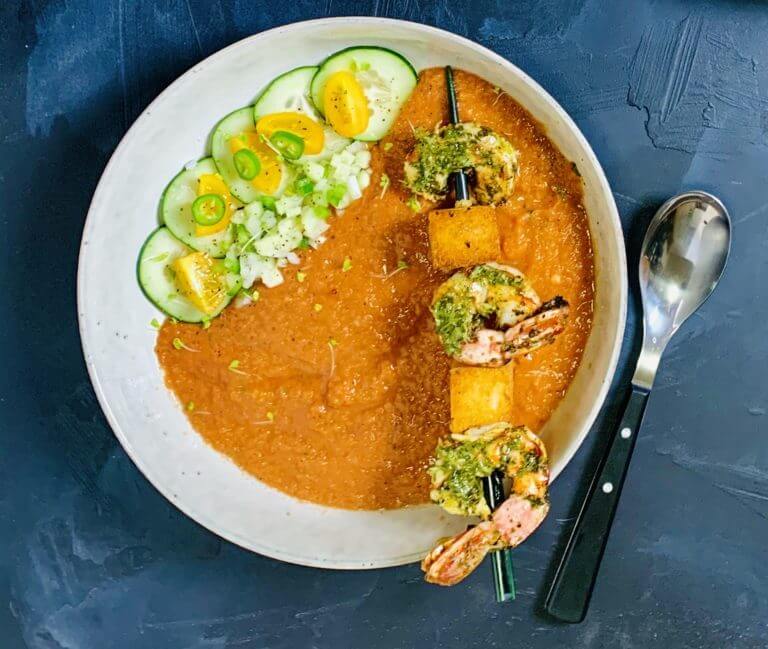
Photo courtesy and copyright Rhonda Adkins Photography
Photographers may also bring one or two lighting assistants to help set up equipment and move it as the day progresses. These helpers may also position and hold a reflector to bounce light around and prevent harsh shadows.
If the shoot is for a restaurant, the chef may also be there to help explain their dishes and add their input. Food photographers need to be great communicators so they can both satisfy the chef’s vision and capture a photo that helps the food shine.
How to Become a Food Photographer
While there’s no one set path to becoming a food photographer, many people find it helpful to follow a few steps.
Develop an Understanding of Photography
Before you can jump into capturing jaw-dropping photos of food, you’ll need to understand how cameras work! While you can take nice photos with the point-and-shoot cameras found on today’s smartphones, professional food photographers typically work with digital cameras that give them more control.
Many food photographers use digital reflex single-lens (DSLR) cameras. These tools allow for manual manipulation of multiple factors, including shutter speed, aperture (the opening in the lens), and ISO (sensitivity to light).
To learn more about photography basics, you can self-study using online videos and books, or you can enroll in a photography course or school.
Strengthen Your Knowledge of Food
Just like portrait photographers need to connect with people and landscape photographers should possess a strong connection with the places they capture, food photographers must understand food. While food photographers won’t always need to cook a delicious dish, they may need some knowledge of various culinary terms to properly communicate with chefs, food stylists, and other team members.
For example, you’ll need to know what a perfectly cooked medium-rare sirloin steak looks like as well as what flavors pair well together, so you know what you can use as a compatible garnish. One way to learn more about food is by attending culinary school, like food photographer Rhonda Adkins did.
As an Air Force veteran, Rhonda had traveled all over the world and sampled food from Africa to South America to Iceland. After she left the military, she began her own food blog, but her photography wasn’t cutting it. So the next step was to attend photography school.
After completing that program, she found that she still needed a greater understanding of the culinary arts as well as some food styling expertise. So she decided to attend online culinary school at Escoffier.
“In order to be a better food photographer, I needed to be a better chef. So I went to [Escoffier]. And now I kind of have the best of both worlds, and I understand the food a lot better which is making me a better photographer.”*Rhonda Adkins, Food Photographer and Online Culinary Arts Graduate
Online culinary school gave Rhonda the cooking knowledge she felt she was missing. It also provided plenty of photography practice, since online students take lots of food photos to share with their Chef Instructors.*
As a food photographer in Montana where there aren’t many food stylists, Rhonda’s culinary knowledge helps her to stand out in the local food scene. She also feels that her culinary education has helped her to work better with chefs. She now understands what it takes to create each dish, and she’s able to “speak their language” of food.
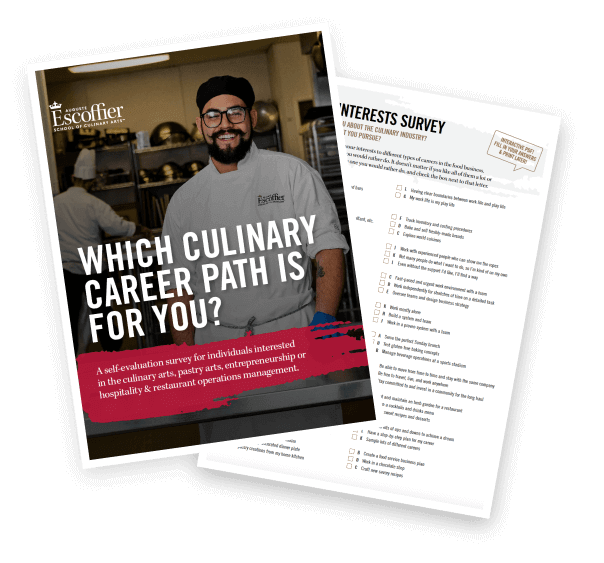
Take the Culinary Career Survey
We’ve compiled a checklist of all of the essential questions into one handy tool: career options, culinary interest surveys, educational opportunities, and more.
Connect with Other Food Photographers
As with many jobs, it can be helpful to connect with mentors who are further along in their careers. Not only can this give you an understanding of the tasks involved in being a food photographer, but you may also pick up some helpful tips and tricks.
If you don’t know any other food photographers, find someone whose work you admire and ask if you can shadow one of their shoots.
An alternative option to connect with other professionals is to join a local photography club. While other members may concentrate on capturing subjects other than food, you can talk shop about photography and gain access to a group of people willing to critique your photos.
Practice, Practice, Practice!
Once you have an understanding of photography and food, it’s time to hone your food photography skills by breaking out your camera at every opportunity.
While cooking, styling, and capturing an elaborate meal can definitely help you improve your skills, don’t forget about utilizing simple moments as well. Taking photos of your morning oatmeal, simple sandwiches, and your takeout meals may also help you refine your skills. By playing with lighting, angles, and props, you may also begin to develop an eye for what works and what doesn’t.
As you practice you might find yourself developing a niche, whether that’s photographing wedding cakes, working with publishers to shoot cookbook photography, or capturing photos for restaurants’ social media campaigns.
“You can specialize in product photography. You could do cookbooks, magazine shoots. There’s a lot of social media avenues also. I also do stock photography. There’s just a lot of opportunity.”*Rhonda Adkins, Food Photographer and Online Culinary Arts Graduate
Showcase Your Work
Once you have a few photographs you’re proud of, it’s time to let others see your work.
Since Instagram focuses on the visual elements of content, it can be a great place for food photographers to display their work. By tagging restaurants and food brands, you can connect with others in the culinary world and maybe even land yourself a job.
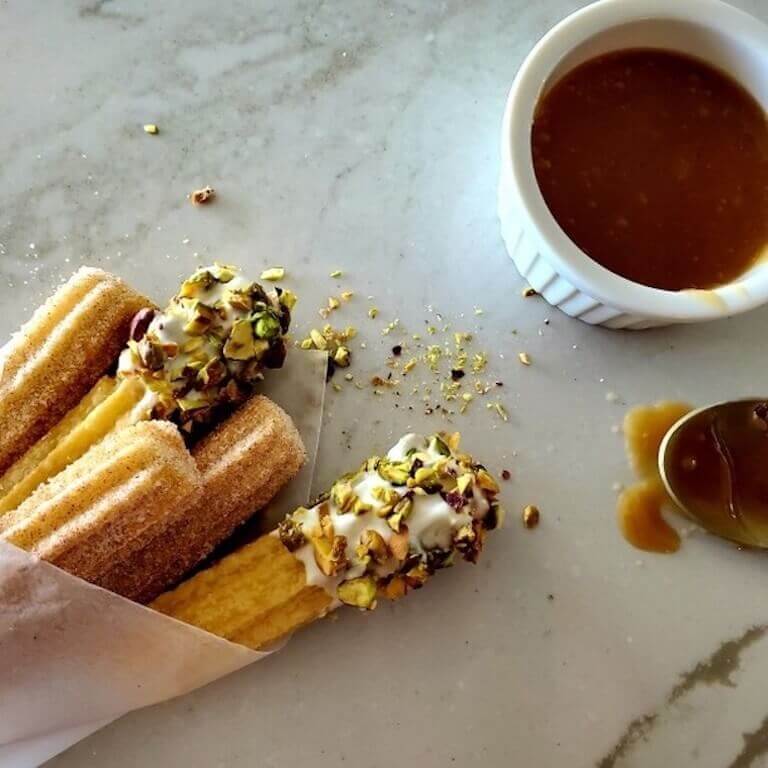
Churros with caramel sauce by Escoffier student Gina K.
It can also be beneficial to develop a website where you can display high-resolution photos as well as finished projects such as product labels and magazine spreads.
Start Making Money as a Food Photographer
Many food photography jobs are short-term freelance jobs, but you can also find full-time, permanent positions. To look for contract positions, you can head to gig-work platforms. And once you have a strong portfolio, you can even begin pitching your services to magazines and cookbook publishers. Remember that pitching can be a numbers game, so don’t be afraid to submit your work to multiple publications to find one that aligns with your style.
When it comes to looking for full-time positions, the process is similar to looking for other jobs—head to job websites. Of course, you may also be able to hear about positions by networking with other professionals in the food photography and styling industry.
Another option is to upload your photographs on websites such as Shutterstock. Each time someone downloads your image, you will receive a small commission.
Capture a New Career in Food Photography
If you want to become a food photographer, one of the first steps is developing a thorough understanding of food! Whether you’re an experienced home cook or are new to the culinary world, culinary school can help introduce you to new dishes, techniques, and terminology.
Learn more about Escoffier’s on-campus or online culinary programs and take the first step toward a career as a food photographer.
Was this article helpful? Try these next:
- How to Become a Chef: The Complete Guide
- Career Options for Culinary School Graduates
- How to Become a Food Influencer
This article was originally published on November 15, 2015, and has since been updated.
*Information may not reflect every student’s experience. Results and outcomes may be based on several factors, such as geographical region or previous experience.

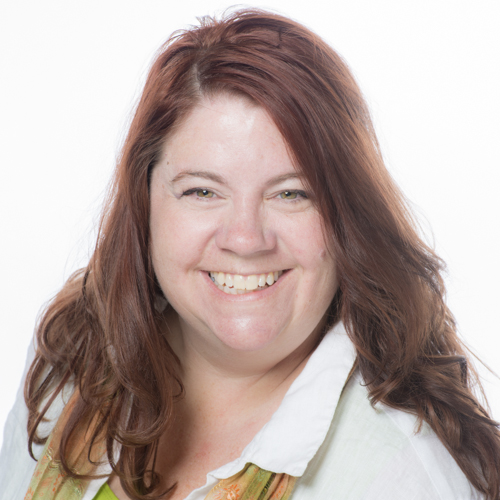 “One of my favorite [photos] is some lemonades…six glasses of lemonade sounds simple, but every time I tried to move a straw to line it up, the fruit would pop up. It took me six hours to get all that stuff lined up!”*Rhonda Adkins, Food Photographer and Online Culinary Arts Graduate
“One of my favorite [photos] is some lemonades…six glasses of lemonade sounds simple, but every time I tried to move a straw to line it up, the fruit would pop up. It took me six hours to get all that stuff lined up!”*Rhonda Adkins, Food Photographer and Online Culinary Arts Graduate